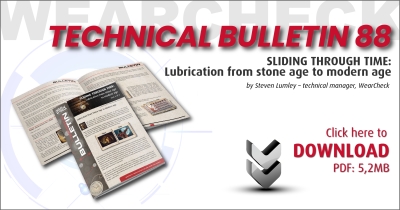From stone age to modern age, pharaohs to phenols, the history of lubrication is a story that demonstrates how a seemingly simple substance - oil - has propelled human progress, shaped industries, and ushered in a world of smoother operations and optimised performance.
Now, while the field of tribology - which is the science of friction, wear and lubrication - has advanced significantly over the last 100 years, the roots of lubrication extend back further than one might imagine. Lubrication, in its simple form, has been in existence at least since the beginning of documented times.
Early humans recognised the importance of reducing friction, and intuitively understood that applying a lubricant between two surfaces would ease their movement. Before the Common Era, tallow (animal fat) and naturally occurring elements were used for lubrication for chariots and in transporting construction materials. In fact, one of the earliest examples of tribological practices can be found in the ancient Egyptians’ use of lubricants to reduce friction in the movement of large stones during the building of the pyramids. Other ancient civilisations like the Greeks and Romans used olive oil and other plant-based oils as lubricants.
Fast forward past the dark ages, (trust me, nothing much happened with lubricant development then) and twelve centuries later, tribology as a scientific discipline begins to take shape during the Renaissance with our favourite Italian polymath - Leonardo da Vinci - whose observations about friction and lubrication laid the foundation for further exploration.
Before the dawn of the industrial revolution, whale oil was commonly used as a lubricant, but with the worldwide decline in whale populations and the widespread use of machines, other sources of lubricants had to be found.
The discovery of crude oil in Pennsylvania in 1859 set the stage for the new oil economy, and led to the development of petroleum-based lubricants, which quickly replaced animal- and vegetable-based lubricants due to their superior performance and availability.
Today, lubricants are highly developed, using complex chemical methods designed to push their potential to the absolute limit. There are specific oils formulated for specific purposes, and our machines - from shipping, to transportation, to industrial factories - work faster and more efficiently than ever before. Our world could not function as it does today without modern lubrication advancements.
But how did we get here? Who first decided that mechanical lubrication was a good idea? And who helped develop these processes over thousands of years to get us to where we are today?
In this trip down memory lane, we will chronicle the significant milestones of lubrication through the ages - but don’t be fooled, this isn’t your run-of-the-mill timeline of notable inventions and courtly characters. Au contraire, like all good sagas, this tale is filled with intrigue and subterfuge, heroes and villains, great victories and heartbreaking defeats, all played out against the backdrop of human progress.
So, join us as we pay tribute to the true significance of these early achievements and the remarkable people through history who pioneered an industry.
To read more about this interesting topic, click here: https://www.wearcheck.co.za/shared/TB88.pdf

